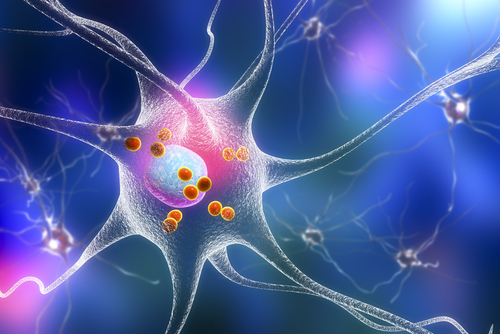Changing TDP-43’s Structure Can Halt Neurodegeneration in ALS and FTD, Study Finds

Accumulation of TDP-43 protein is known to drive neurodegeneration associated with amyotrophic lateral sclerosis (ALS) and frontotemporal dementia (FTD). Now, researchers have found that targeting the structure of TDP-43 and blocking its normal activity can halt the death of nerve cells linked to TDP-43 accumulation in ALS and FTD models.
The study with that finding, “An Intramolecular Salt Bridge Linking TDP43 RNA Binding, Protein Stability, and TDP43-Dependent Neurodegeneration,” was published in the journal Cell Reports.
“By manipulating the structure of the protein, we determined that [its activity] is pivotal for maintaining the stability, function, and toxicity of TDP-43 in disease models,” Sami J. Barmada, MD, PhD, the study’s senior author, said in a press release written by Staci Vernick. Barmada is an assistant professor of neurology at the University of Michigan.
About a third of patients with ALS also develop FTD, a common cause of dementia that can affect behavior, personality, language, and motor function.
Similar to many other neurodegenerative diseases, nerve cells of people with ALS and FTD accumulate toxic aggregates of specific proteins that eventually lead to cell death. In ALS and FTD the main component of these toxic clumps is TDP-43, a protein that normally binds and stabilizes RNA molecules (an intermediate molecule that results from DNA processing and is necessary for the production of proteins).
Join our ALS forums: an online community especially for patients with Amyotrophic Lateral Sclerosis.
Accumulation of TDP-43 affects the stability of certain RNAs, namely those that encode proteins involved in the production of energy and that contribute to two key signaling pathways for cell survival.
Previously, researchers showed that promoting TDP-43 clearance extended nerve cell’s survival and mitigated disease in neuronal ALS models. However, the factors responsible for maintaining TDP-43 stability and resistance to clearance remained unknown.
Now, the researchers hypothesized the cause was linked with TDP-43’s ability to bind RNA. To test this, they altered the structure of TDP-43 by introducing specific mutations that disrupted an interaction between two small portions of its structure that are required for TDP-43 to bind RNA.
TDP-43 protein that cannot bind RNA and work properly, researchers saw, was rapidly destroyed and no longer would be able to cause nerve cell death. They confirmed this by tracking and comparing nerve cells that were carrying the normal or mutated version of TDP-43. Using an automated imaging analysis method where thousands of individual neurons are analyzed, researchers found the TDP-43 mutated version could not trigger neurons’ death, with more than 70% reduction in cell’s death.
“This is like a clinical trial in a dish, measuring the fate of each nerve cell as if it were a person,” Barmada said. “We saw when we interrupted the structure, it dramatically destabilized the protein. Cells just chewed it up.”
“We know in disease that if there is too much TDP-43, cells die,” he added. “If the excess TDP-43 is degraded, as here, the cells are rescued.”
To further investigate the relevance of these findings, researchers teamed up with Asim Beg, PhD, from the University of Michigan’s Department of Pharmacology, and engineered a worm, called Caenorhabditis elegans, to carry the mutated, non-functional versions of TDP-43. They found that these engineered worms were identical to worms lacking TDP-43 altogether, suggesting that, indeed, the RNA-binding motifs they altered are essential for TDP-43 function and toxicity.
Overall, these results suggest that therapeutics targeting and modifying the structure of TDP-43, so that the protein can be degraded, may help halt neuron’s death in ALS and FTD.
“If you have an approach that can interrupt this structure, you might be able to mop up the extra TDP-43 that’s there and prevent nerve cell death,” Barmada said.
Still, even though such medicine can be developed, it is important to carefully tailor its dosing so it does not completely deplete cells of TDP-43, since this protein is essential for life, “But in theory, the dose can be adjustable, something that gives you a dial on TDP-43,” Barmada said.
Now, he said, the next question is “What’s the magic level?”






